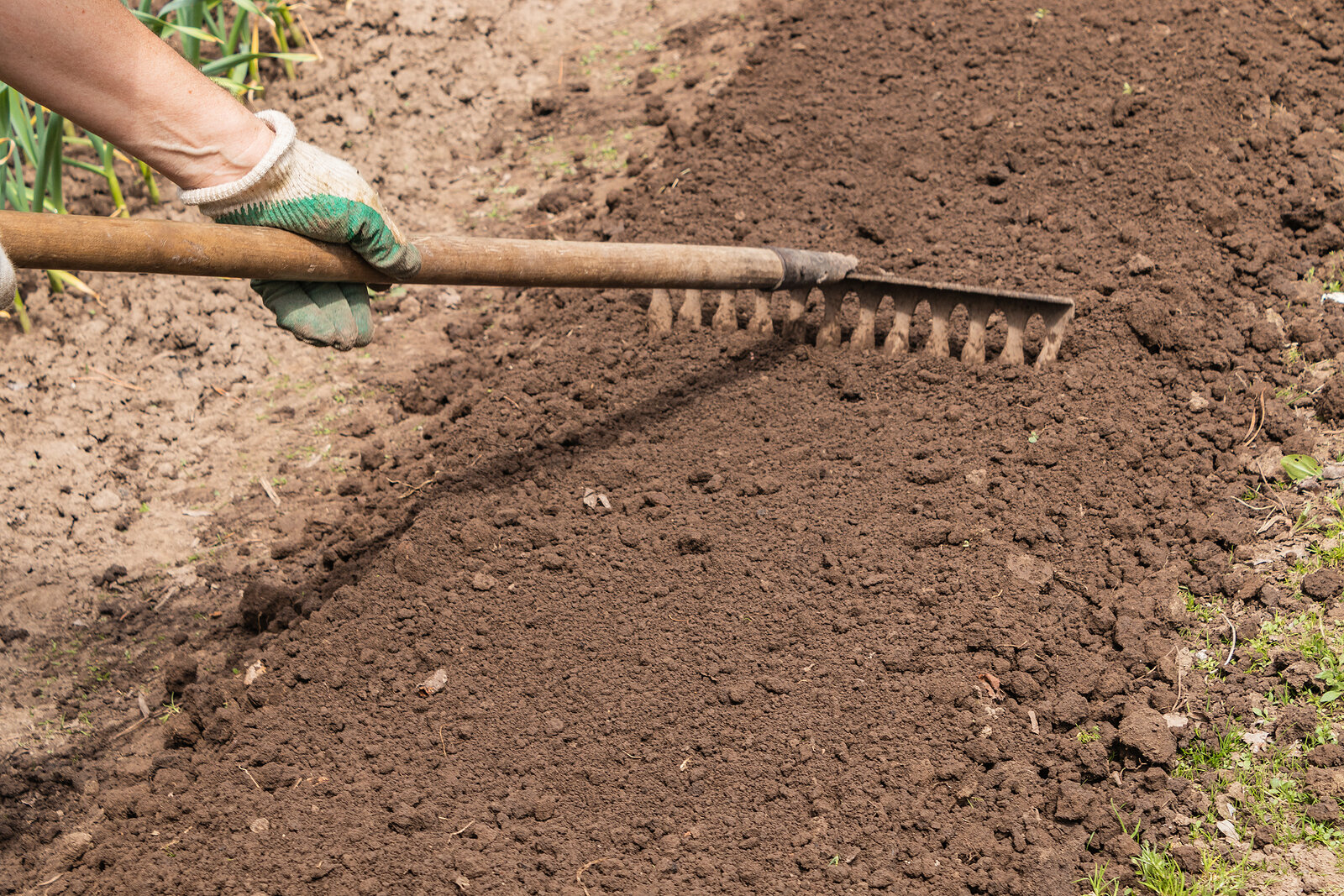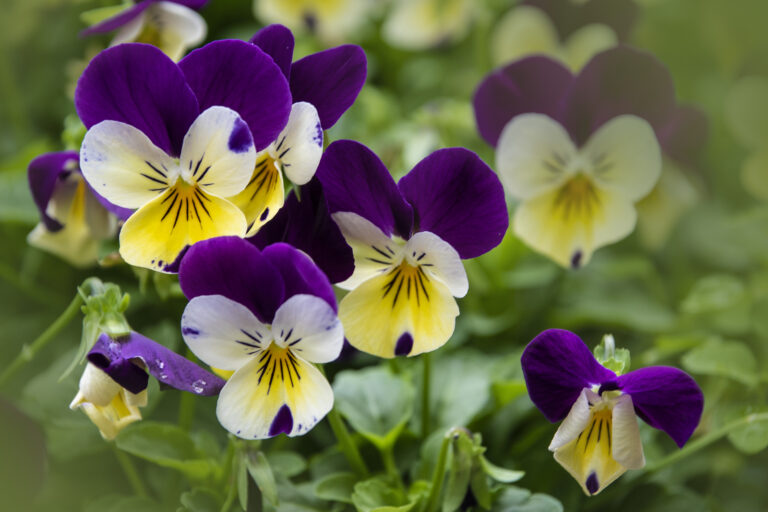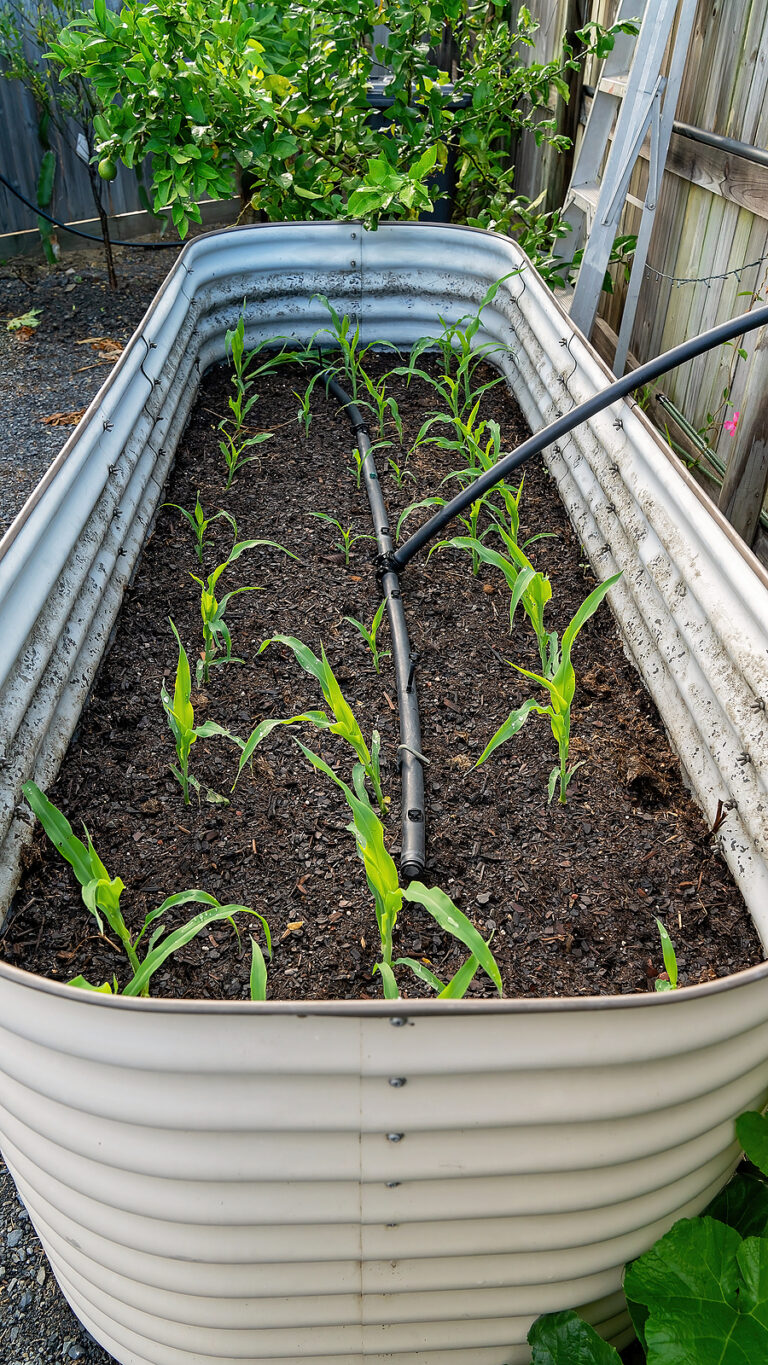No-Dig, No-Till Garden Beds
A no-dig, no-till garden bed can be made by laying down layer-upon-layer of organic materials that will decompose themselves into a nutrient-rich planting bed for flowers, shrubs, herbs, and vegetables. This no-dig, no-till method has been the basis of Chinese gardening for thousands of years; it is known as sheet composting and more recently has been dubbed lasagna gardening.
Sheet composted garden planting beds are quick draining and fast warming in spring for an early start to the growing season. They are much like unframed raised bed rising from 4 to 10 inches (10-25cm) or more above the surrounding ground. Such beds formed from raw organic materials—dry leaves, grass clipping, and the like–require about three or so months for composting and settling.
How to make a no-dig, no-till garden bed
Step One: Choose a spot for your planting bed that is relatively flat. It makes no difference if the ground has been worked or is fallow or if there is lawn or weeds growing there. Cover the soon-to-be planting bed with eight to ten sheets of newspaper or a single layer of corrugated cardboard. (Avoid newsprint or cardboard that uses colored ink or has a waxy surface—inks and wax can be toxic.) Soak the newsprint or cardboard with water so that it won’t fly away; this will begin the composting process.
Below the newsprint, weeds and grass will be quickly smothered and begin to break down adding nitrogen necessary for composting; as well, earthworms who will aid decomposition will be attracted to the wet darkness. No digging or tilling is necessary to prepare the ground for this start.
Step Two: Next, lay down several layers or “sheets” of organic materials—each layer to be 1 to 4 inches (2.5-10cm) thick. Use the same “greens” and “browns” organic materials you would place in a compost pile: “greens” for composting are fresh, moist materials including grass clippings, fruit and vegetable scraps, coffee grounds, tea bags, tea leaves, weeds that have not gone to seed, seaweed, and kelp, and spent blooms and trimmings from the garden; “browns” for composting are dry materials including dry leaves, pine needles, straw, peat moss, aged manure, and shredded newsprint or paper.
Greens are rich in nitrogen; browns are rich in carbon. The carbon to nitrogen ratio ideal for composting is 30:1; this can be achieved by alternating browns and greens in nearly equal parts, but most home composters find great success by adding half again to nearly twice the amount of browns as greens.
The height to start off your no-dig, no-till layered bed should be about 2 feet (61cm); a bed this high will “cook down” or decompose to a raised mound of dark rich soil 10 to 12 inches (25-30cm) high, more than sufficient root space for most vegetable crops.
You can make a layered bed at any time, but in the warmer part of the year microorganisms that decompose organic materials are most active and the composting process is accelerated. Allow three to four months depending upon daytime temperatures for your layered bed to decompose into rich, black humus, an ideal soil for vegetable growing. If you intend to plant in the bed sooner, add 3 to 6 inches (7-15cm) of aged compost, planting mix, or topsoil across the top of the bed right away. This will give seeds and seedlings a place to root as the layered organic materials beneath them decompose.
Step Three: Plant in the layered bed just as you would any other raised or mounded bed. The layered planting bed will be nutrient-rich, moisture-retentive but well-drained, and will require little weeding. All home vegetable crops should find more than enough soil depth in the layered planting bed for root growth and abundant production. After your first harvest, you can add a new layer of compost to your raised bed; adding a new 1 or 2 inch (2.5-5cm) “sheet” or layer of compost to the bed twice a year will keep it nutrient rich. There will be no need to ever dig or till the bed.
No-dig, no-till gardening has been practiced for centuries. The New England gardener Ruth Stout wrote several books on this gardening method in the 1950s and 1960s. More recently the garden writer Patricia Lanza re-popularized the concept in a book called Lasagna Gardening.




